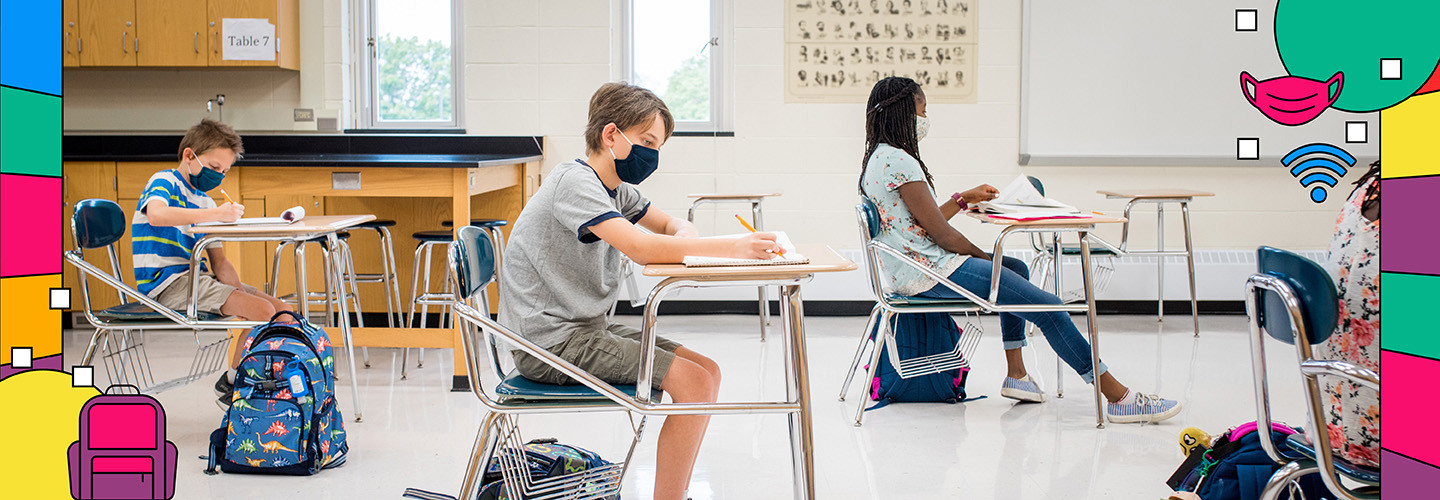In Florida, Martin County School District reopened in mid-August 2020, with a synchronous hybrid learning model for both students in classrooms and those connecting remotely from home, Chief Academic Officer Tracey Miller says. With this setup, even as students had to quarantine, the continuity of their instruction was preserved.
Of course, the pandemic didn’t come with a playbook for how to operate schools, so “the more that we hear from others about what worked in districts and what their struggles were, the better,” Miller says.
“Sometimes it’s just nice to know that you’re not alone,” she adds. “And other times you definitely can pick up something that might make your world a little easier.”
WATCH: In this Twitter exclusive, we ask a few of our 2021 K–12 IT Influencers about the ways they’re Ready to Reconnect this fall. Check out the video below, and follow us on Twitter @EdTech_K12 to stay up to date on the latest content.
We talked to #K12 educators, #ITLeaders & #edtech specialists about reconnecting IRL this fall. Here’s what they had to say about going #backtoschool: https://t.co/wgYynEAyny pic.twitter.com/hY2fbtf2Kv
— EdTech K–12 Magazine (@EdTech_K12) August 16, 2021
Schools Should Establish Clear Routines from Day One
One of the most important reopening lessons Martin County School District learned last year was to establish clear routines for students from the first day of class.
“We have no idea what students’ routines may have been,” Miller says. “Understanding how they’re coming into our classroom, what they’re prepared for and what they’re able to handle emotionally” is crucial to a successful year.
Establishing routines includes setting clear expectations for the use of devices and making sure everyone understands that the purpose of technology is to enhance and support teacher instruction, not replace it, Miller says.
When the pandemic began, the district had an existing one-to-one device program for fifth through 12th graders and was able to distribute school-owned devices to all students by August. Teachers who weren’t already using Google Classroom last year were asked to adopt it, and everyone in the district will start using the same learning management system this fall, which creates continuity districtwide.
Structure combined with flexibility has been the district’s mantra, Miller says. This year, the approach remains the same even as the district ends hybrid learning and shifts to full-time in-person instruction.
MORE ON EDTECH: Discover classroom and AV design trends emerging from pandemic learning.
Tech Can Support Social-Emotional Learning for Students and Staff
At the Muskego-Norway School District in Wisconsin, strict contact-tracing routines made all the difference to a smooth re-entry last year, CIO Tony Spence says. This helped the district safely offer in-person co-curricular activities, which went a long way toward supporting students’ social and emotional well-being.
“We think those activities were just as valuable as in-person instruction because there was a bit of normalcy that came with it, and they had an opportunity to get into activities where they were bonding with coaches and fellow classmates,” Spence says.
Not all districts have the resources for strict contact tracing. At the very least, Spence advises, administrators should develop collaborative, communicative relationships with local health officials and elected leaders so they can stay informed and respond quickly as guidance changes.
For districts to be ready to reconnect, adequate staff training and curriculum to support students’ social and emotional well-being is paramount. Ector County ISD’s Muri says when the majority of his district’s 34,000 students returned last year, staff learned a hard lesson.
“While we anticipated the trauma that the pandemic had brought to some of our kids and families, I think we underestimated the amount of trauma that our staff and our students were dealing with,” he says.











